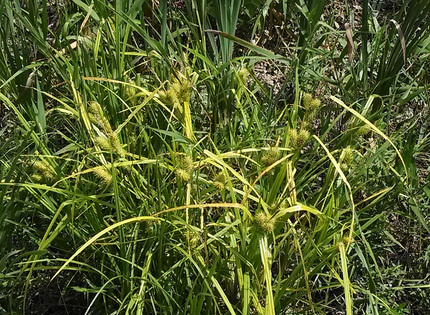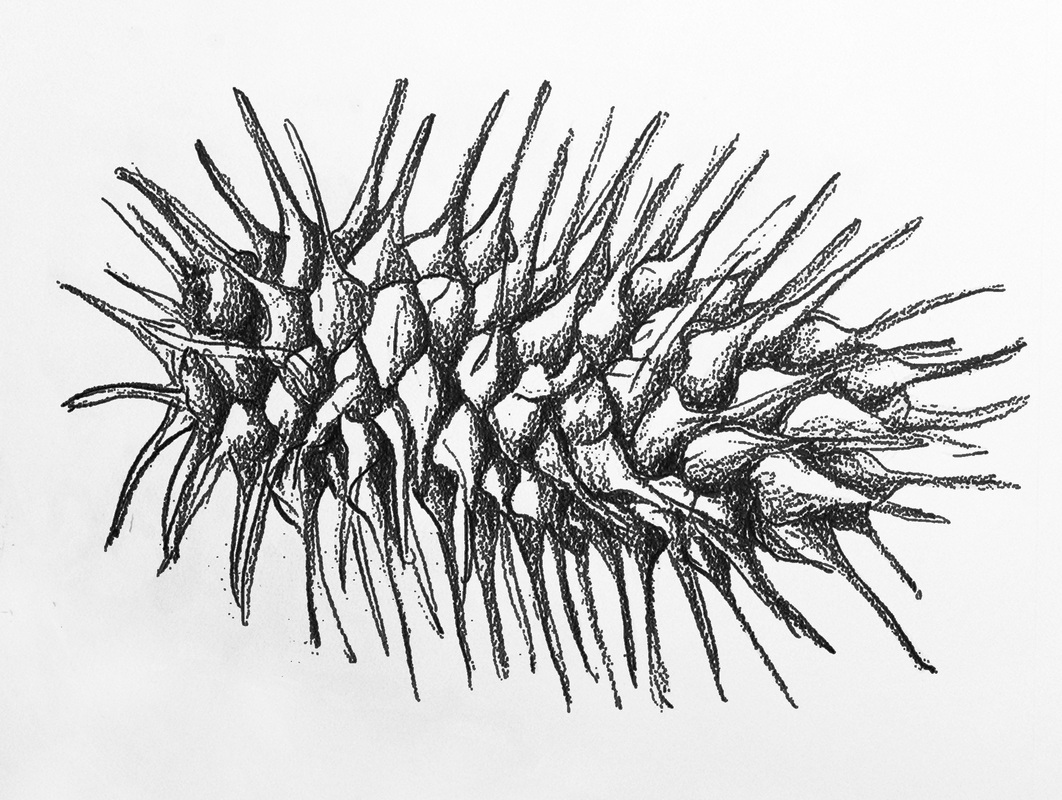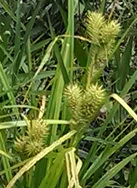
Is it a weed? Some sedges are definitely considered weeds because they spread rapidly in plowed fields, interfering with the growth of a farmer’s crops. This particular one could be classed as either a weed or an ornamental, depending on your point of view.
Sedges are rather grasslike. Perhaps they would be considered closer to grasses if we didn’t have so very many kinds of grass worldwide – there are something like 10,000 grass species globally. There are also a lot of sedge species – at least hundreds, possibly 2000 or more. In practical terms, not many people differentiate that closely among all the various kinds of sedge.
If you’d like to be able to impress your friends with your ability to distinguish between grasses and sedges, you can use the following rhyme or a variation:
Sedges have edges,
Rushes are round, and
Grasses have nodes where
Leaves are found.
This means that if you roll a grasslike plant stalk between your fingers, you can usually tell if it’s a sedge if the stalk seems to have angles, meaning it’s more or less triangular in cross section. You can find nice closeup photos here:
http://www.hiltonpond.org/ThisWeek060615.html
I can’t tell you for certain that the sedge plant I drew and photographed is Carex lurida, also known as Lurid Sedge, Shallow Sedge, and a few other names. It might well be. And it it’s not, then some plant nurseries around the country have made the same mistake. Lurid Sedge is known for its large and impressive seed head, as well as a noticeably yellow-green foliage. Maybe the “lurid” in the name refers to the chartreuse color, which is brighter than the foliage of the surrounding plants in my photo.
Lurid sedge needs extremely moist – even wet – soil. As a gardener, you might want it if you are planting around a pond. Birds and other small animals in the swamp use sedge in various ways: they eat the seeds, they use the leaves for nests, and they shelter among the plants.


 RSS Feed
RSS Feed